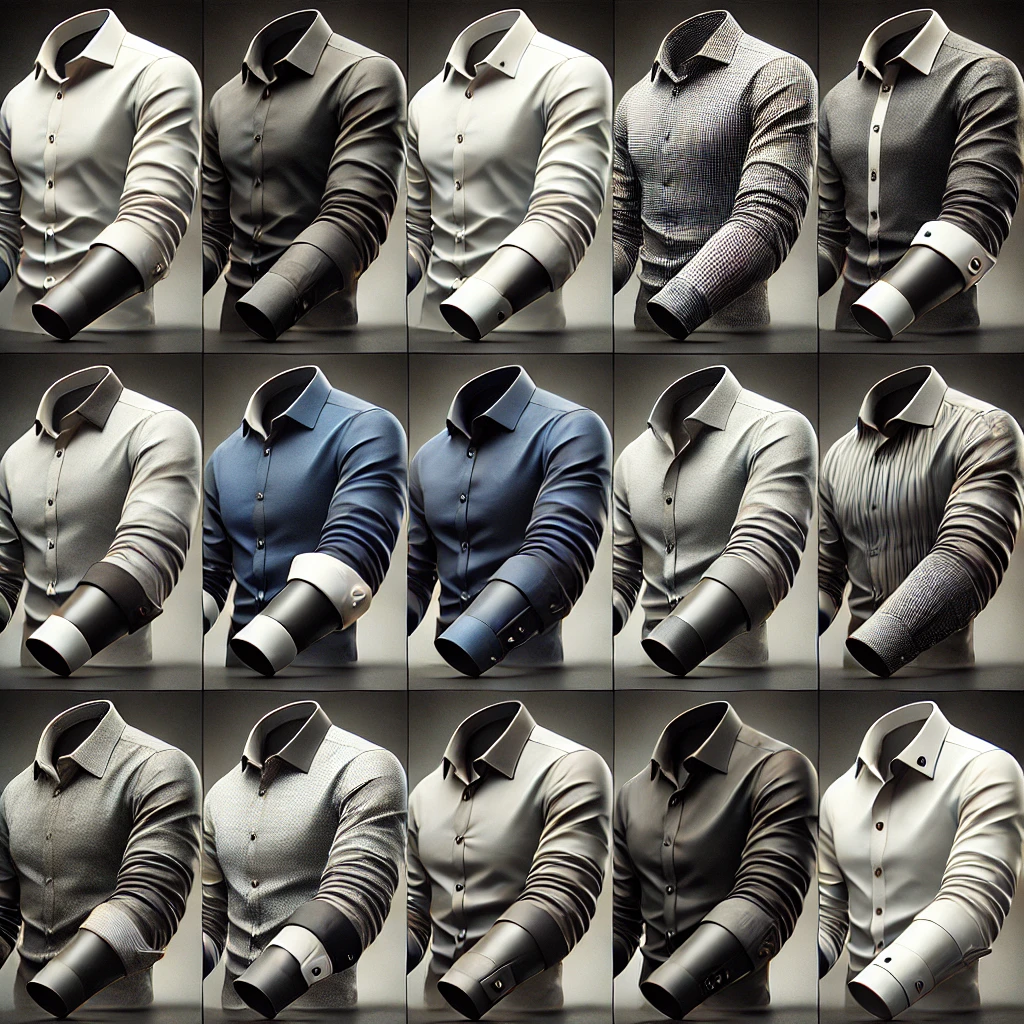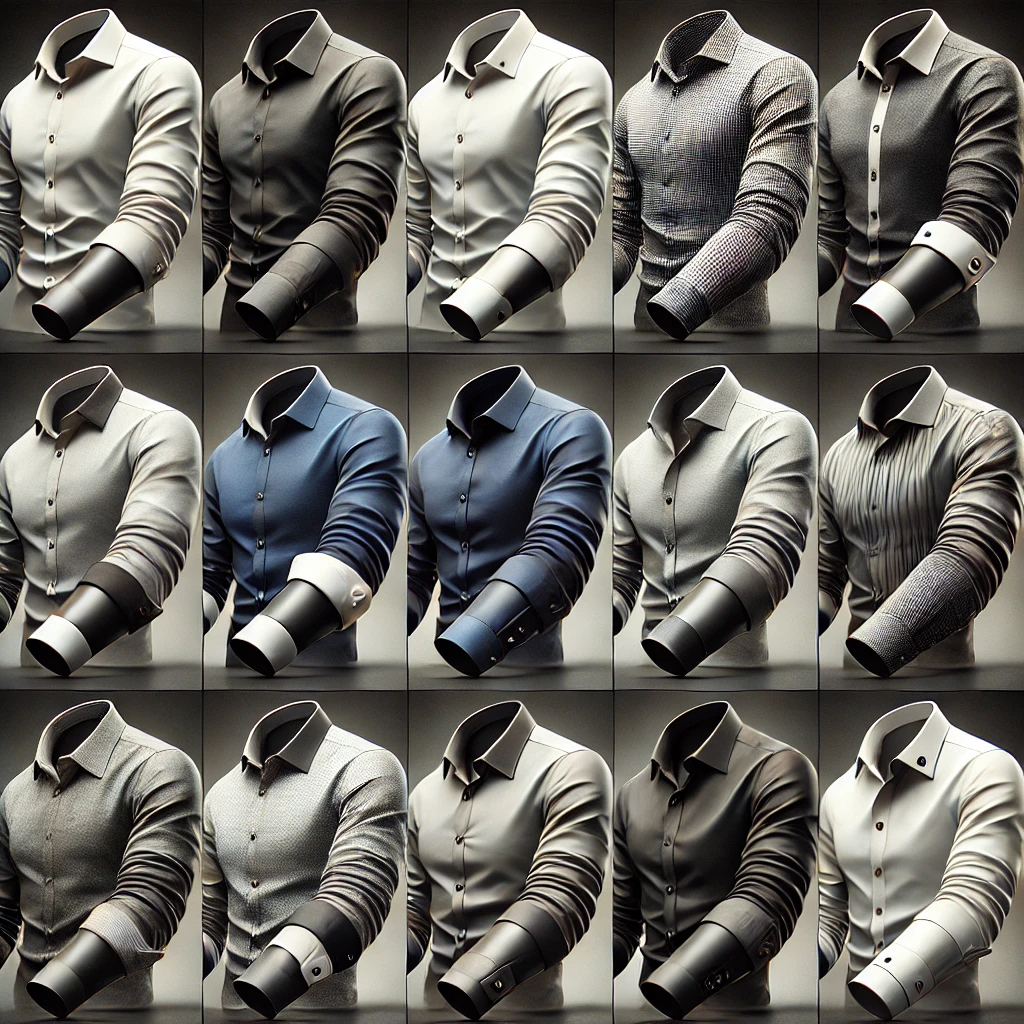
1. The Impact of Shirt Sleeves on Your Outfit
The Influence of Sleeve Design on Your Overall Look
Shirt sleeves are a crucial element in determining the overall impression of an outfit. Whether it’s a casual, business, or formal look, the type of sleeve can subtly influence how you are perceived. For example, rolled-up sleeves give a relaxed and approachable vibe, while structured cuffs create a polished and authoritative presence.
Choosing the Right Sleeve for Different Occasions
Each sleeve type has its place in different settings. In a business setting, structured sleeves with well-pressed cuffs are ideal. On the other hand, casual environments allow for more relaxed options such as rolled or short sleeves. Understanding the appropriate sleeve for each occasion can elevate your style effortlessly.
The Balance Between Sleeve Length and Style
Finding the perfect sleeve length is essential for achieving a well-balanced silhouette. Longer sleeves provide a more formal and elegant look, while shorter sleeves offer a comfortable and casual aesthetic. The key is to match sleeve length with your body type and personal style preferences.
2. Basic Shirt Sleeve Designs and Their Characteristics
Regular Sleeves: The Standard Choice for Any Occasion
Regular sleeves, also known as set-in sleeves, are the most common design found in dress and casual shirts. They are sewn to the body of the shirt at the shoulder seam, providing a clean and classic look. This design is highly versatile and works well for both professional and everyday wear.
Raglan Sleeves: A Sporty and Flexible Option
Raglan sleeves extend from the neckline instead of the shoulder seam, creating a continuous fabric flow. This design is commonly used in sportswear due to its increased range of motion and comfort. A raglan sleeve can add a unique touch to casual and athleisure outfits.
Set-in Sleeves: A Fitted and Structured Style
Set-in sleeves are stitched at the shoulder seam, giving a more tailored fit compared to raglan sleeves. This style is frequently seen in dress shirts, blouses, and jackets, offering a refined and sophisticated appearance.
3. Types of Shirt Cuffs and Their Differences
Single Cuffs: Simple and Versatile
Single cuffs, also known as button cuffs, are the most common type of shirt cuff. They are practical, easy to fasten, and suitable for both formal and casual wear. These cuffs can be worn with or without cufflinks, making them a great all-around choice.
Double Cuffs: The Elegant Choice for Formal Attire
Double cuffs, also called French cuffs, are folded back and fastened with cufflinks. This style is typically seen in formalwear and business attire, adding an element of sophistication to a suit or tuxedo.
Convertible Cuffs: Flexibility in Styling
Convertible cuffs can be worn as either button cuffs or French cuffs, depending on the occasion. This hybrid design provides versatility, allowing the wearer to adapt their outfit effortlessly.
4. Recommended Sleeve Designs for Each Season
Spring and Summer: Breathable and Easy to Roll
During warm seasons, lightweight fabrics and short sleeves are ideal. Rolling up long sleeves can also provide a relaxed yet stylish look. Linen and cotton shirts with airy sleeves help maintain comfort while staying fashionable.
Autumn and Winter: Structured and Layered Styles
In colder months, long-sleeved shirts with thicker materials such as flannel and wool are preferred. Layering with jackets and coats adds depth to the outfit while keeping warmth in mind. Cuffed sleeves work well with formal and semi-formal winter styles.
Year-Round Sleeve Options: Versatility for Any Weather
Some sleeve designs, such as roll-tab sleeves, offer flexibility throughout the year. These sleeves can be worn down for a polished look or rolled up for a casual vibe, making them a great investment for any wardrobe.
5. How to Choose the Right Sleeve Design for Your Look
Picking the Best Sleeve Based on Your Body Type
Different sleeve styles complement various body shapes. For example, individuals with broader shoulders may prefer raglan sleeves to soften their frame, while those with slimmer arms might opt for fitted set-in sleeves for a more structured look.
Outfit Examples Based on Sleeve Designs
Business outfits typically incorporate regular sleeves with buttoned cuffs, while casual attire allows for more relaxed options like rolled-up sleeves. Knowing how to mix and match sleeve styles with other wardrobe pieces enhances overall fashion choices.
Styling Techniques to Make the Most of Your Shirt Sleeves
Adjusting sleeve length, adding accessories like cufflinks, and pairing with outerwear are all techniques to enhance a shirt’s aesthetic appeal. Incorporating these elements can transform a simple shirt into a standout outfit.
Conclusion
Understanding different shirt sleeve designs and their impact on style can elevate any outfit. Whether choosing a professional, casual, or seasonal look, the right sleeve type makes all the difference. Experimenting with sleeve styles allows individuals to personalize their wardrobe and express their unique fashion sense.



Comment